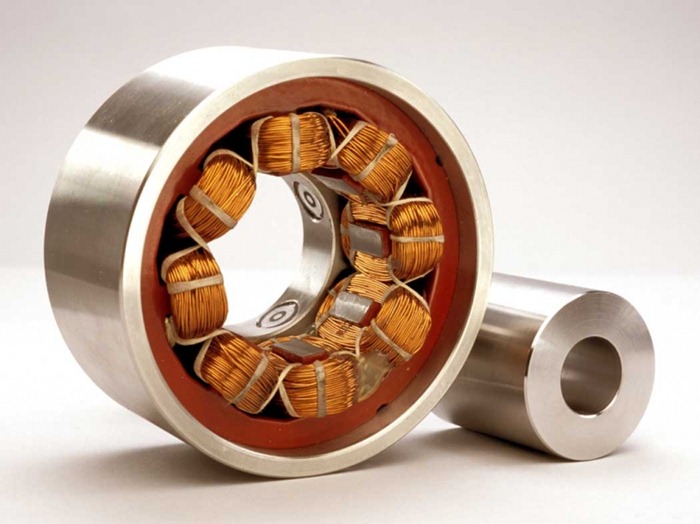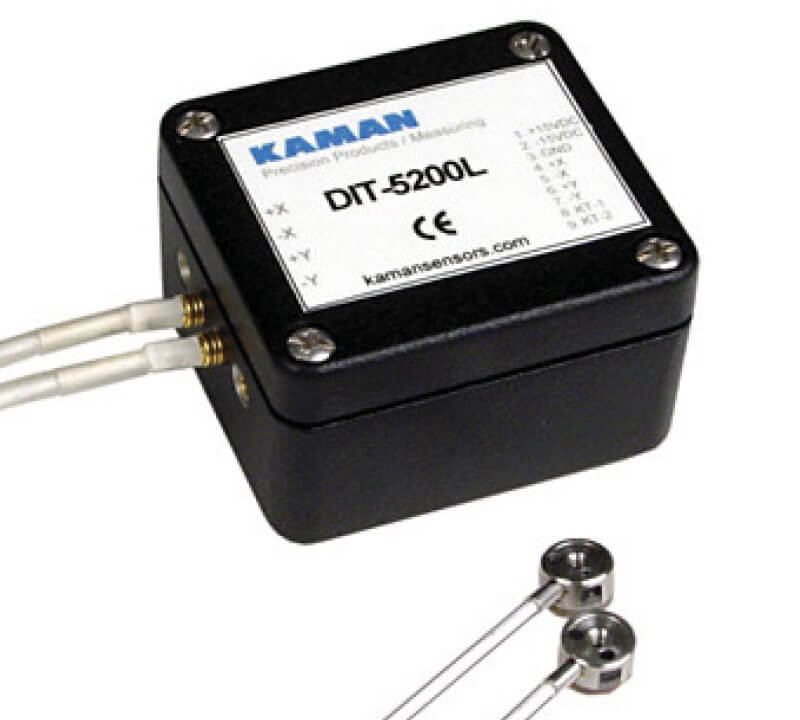A magnetic bearing is a type of bearing or shaft that is supported using magnetic levitation. A shaft magnetically levitated can rotate at high speeds without friction, wear and with very low vibration. A passive magnetic bearing uses permanent magnets that do not require power while an active magnetic bearing works by electromagnetic suspension.
Power is applied to the electromagnetics and sensors are used to provide feedback to control the rotor position and keep it centered. The sensors (sometimes referred to as gap sensors) are usually in a pair and operate in a differential mode. A controller uses the differential signal from the sensors to adjust the pairs of electromagnetics on opposite sides of the rotor to maintain an equal bias keeping the rotor centered.

Magnetic bearings are used in industrial machines such as pumps, compressors, turbines and generators are appealing because they are generally more efficient, quieter and do not require lubrication. Magnetic bearings can also be used to support maglev trains for transportation.
Kaman’s DIT-5200L is designed to provide a true differential output with 1, 2 or up to 3 pairs of sensors to provide position feedback for active magnetic bearing actuator controller systems. Various sensors are available depending on the measuring range and mounting type required.

